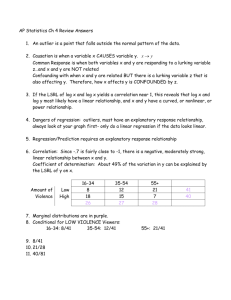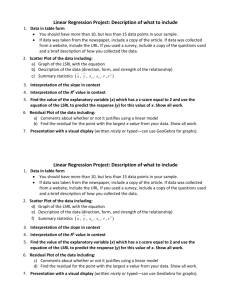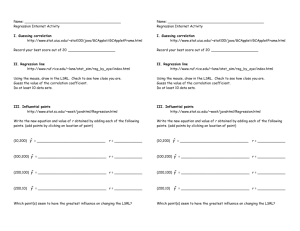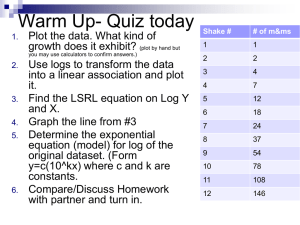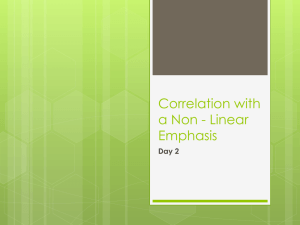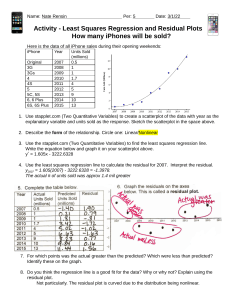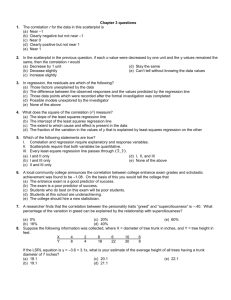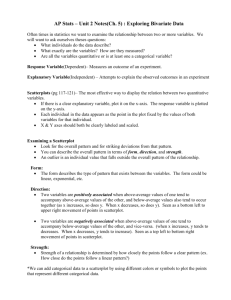File
advertisement
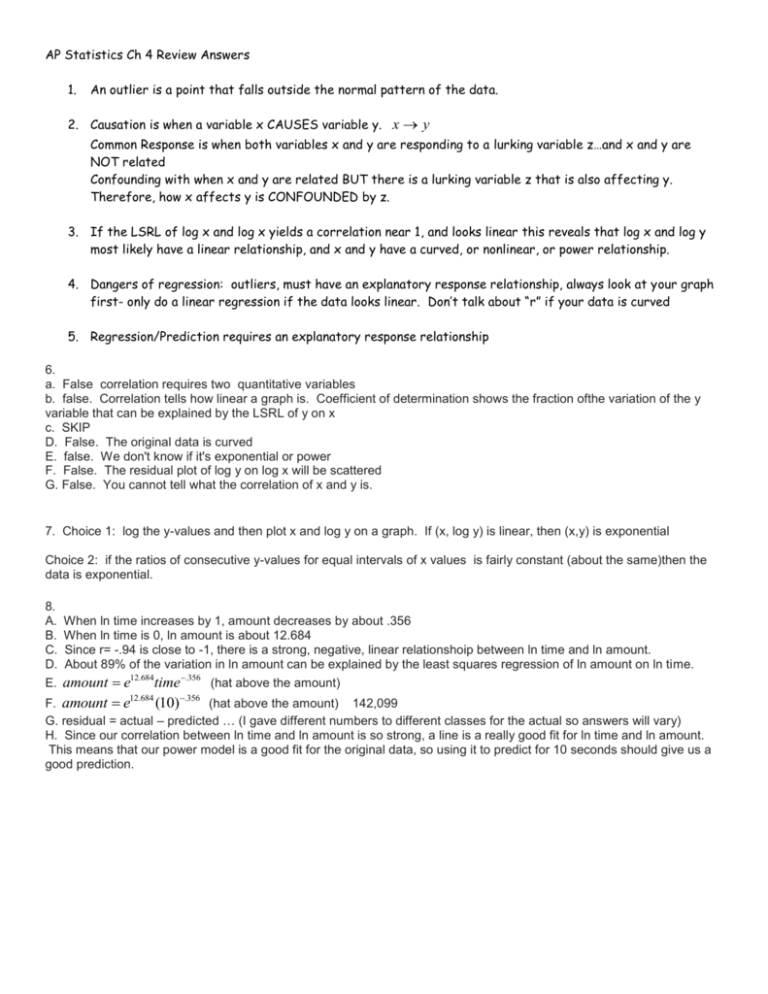
AP Statistics Ch 4 Review Answers 1. An outlier is a point that falls outside the normal pattern of the data. 2. Causation is when a variable x CAUSES variable y. x y Common Response is when both variables x and y are responding to a lurking variable z…and x and y are NOT related Confounding with when x and y are related BUT there is a lurking variable z that is also affecting y. Therefore, how x affects y is CONFOUNDED by z. 3. If the LSRL of log x and log x yields a correlation near 1, and looks linear this reveals that log x and log y most likely have a linear relationship, and x and y have a curved, or nonlinear, or power relationship. 4. Dangers of regression: outliers, must have an explanatory response relationship, always look at your graph first- only do a linear regression if the data looks linear. Don’t talk about “r” if your data is curved 5. Regression/Prediction requires an explanatory response relationship 6. a. False correlation requires two quantitative variables b. false. Correlation tells how linear a graph is. Coefficient of determination shows the fraction ofthe variation of the y variable that can be explained by the LSRL of y on x c. SKIP D. False. The original data is curved E. false. We don't know if it's exponential or power F. False. The residual plot of log y on log x will be scattered G. False. You cannot tell what the correlation of x and y is. 7. Choice 1: log the y-values and then plot x and log y on a graph. If (x, log y) is linear, then (x,y) is exponential Choice 2: if the ratios of consecutive y-values for equal intervals of x values is fairly constant (about the same)then the data is exponential. 8. A. B. C. D. When ln time increases by 1, amount decreases by about .356 When ln time is 0, ln amount is about 12.684 Since r= -.94 is close to -1, there is a strong, negative, linear relationshoip between ln time and ln amount. About 89% of the variation in ln amount can be explained by the least squares regression of ln amount on ln time. time .356 (hat above the amount) 12.684 F. amount e (10).356 (hat above the amount) 142,099 E. amount e 12.684 G. residual = actual – predicted … (I gave different numbers to different classes for the actual so answers will vary) H. Since our correlation between ln time and ln amount is so strong, a line is a really good fit for ln time and ln amount. This means that our power model is a good fit for the original data, so using it to predict for 10 seconds should give us a good prediction. Amount of Violence Low High 16-34 8 18 26 35-54 12 15 27 7. Marginal distributions are in purple. 8. Conditional for LOW VIOLENCE Viewers: 16-34: 8/41 35-54: 12/41 55+ 21 7 28 41 40 55+: 21/41 9. 8/41 10. 21/28 11. 40/81 12. The ratios of the spending are fairly constant (between 1.5 and 2.2) so I’m going to use an exponential graph. Also, when you log the spending, the graph of year and log spending looked linear. The LSRL through the year and log spending is: The model for the original data is lo ĝ spending 1.00 .052 year spenˆding 101.00 10.052 year spenˆding 101.00 10.052(88) 376703.8 1.00 For 1990: spenˆding 10 10.052(90) 478630.09 , so the residual (Actual – Predicted) = For 1988: 422257 – 478630 = -56373
